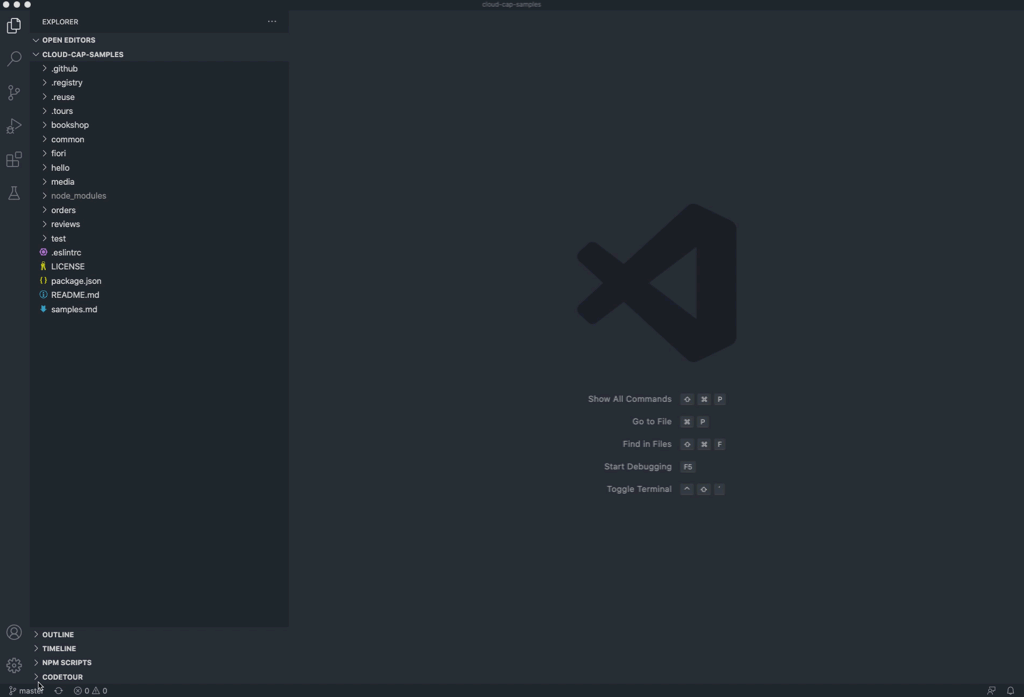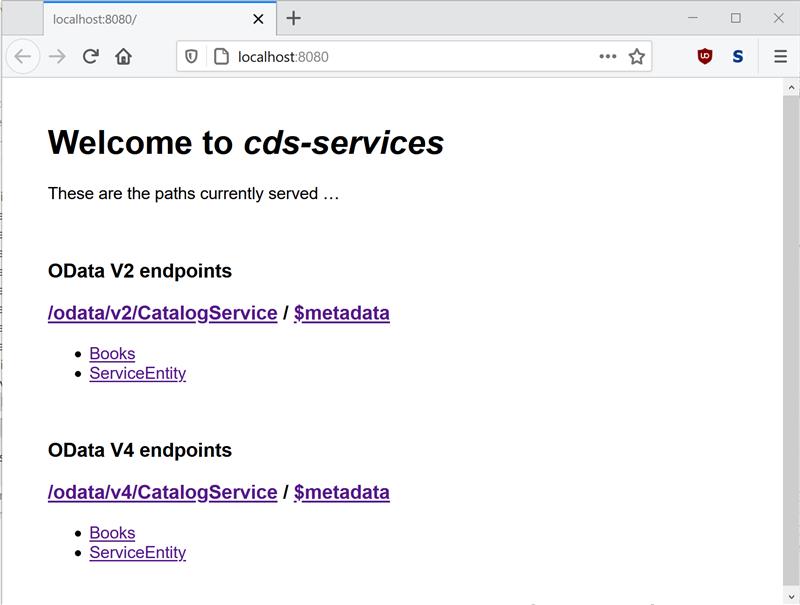February 2021





Docs and Samples
Real-Time Search Improvements
The search ranking algorithm has been improved to show more accurate results. Additionally, capire can now be searched in real-time.
Full-text search results are automatically highlighted and the scroll position is adjusted to display the first result.
Guided Tours in cap/samples
Take a guided tour in VS Code through our CAP samples and learn which CAP features are showcased by the different parts of the repository. Just install the CodeTour extension for VS Code.

We'll add more code tours in the future. Stay tuned!
Using SQLite and SAP HANA Functions
CAP samples demonstrate how you can use native database functions of SQLite and SAP HANA in one code base. There is also a code tour available for it.
CDS Language & Compiler
Resolving Ambiguities for Auto-Redirection of Associations
If there are several equally suited potential targets for the auto-redirection of an association, you can now resolve the ambiguity with the annotation @cds.redirection.target. Use the value true to make an entity a preferred redirection target, or false to exclude an entity as target for auto-redirection. See section Auto-Redirected Associations for a detailed example.
Node.js Runtime
Important Changes ❗️
The following changes can affect your project. See the respective sections for details and potentially necessary actions.
- The default implementation of a messaging service with kind
enterprise-messagingis now multitenant aware. The old, shared variant is available through kindenterprise-messaging-shared. .afterhandlers are consistently called with a result with a type based on the respective request.- Managed properties of a containing entity are updated if any composition target is updated.
Authorization Enhancements
If not explicitly contained in the service definition, composite entities that are auto-exposed by the CDS Compiler can't be accessed directly, and associated entities that are auto-exposed by means of @cds.autoexpose are read-only. Additionally, implicitly autoexposed entities inherit the authorization restrictions of their containing entity when accessed via navigation.
Instance-based @restrict.where clauses are ignored during CREATE requests. Previously, the respective requests were rejected as there are no WHERE clauses in INSERT statements. This change allows to specify instance-based restrictions with grant type WRITE (cf. Control Access with @restrict). It can be deactivated during a two-month grace period through compatible feature flag cds.env.features.skip_restrict_where = false.
Finally, trying to modify an entity without the necessary authorization results in an error response with HTTP status code 403 (instead of previously 404).
Data in .after Handlers
.after Handlers are consistently called with a result with a type based on the respective request, for example an array for a collection and an object for a single entity. Previously, after handler for read requests were always called with an arrayed result. This change can be deactivated during a two-month grace period through compatible feature flag cds.env.features.arrayed_after = true.
Managed Properties in Composition Trees
Managed properties of a containing entity are updated if any composition target is updated. For example, on a deep update to OrderHeaders with payload { items: [...] }, OrderHeaders.modifiedAt will be updated if items contains changes. This change can be deactivated during a two-month grace period through compatible feature flag cds.env.features.update_header_item = false.
Error Response Targets
The target of error responses now adheres to the OData path syntax. This allows, for example, the UI to correctly highlight the respective input and display the i18n name of the respective property even in case of name clashes.
Example:
POST /Headers
{
ID: 1,
items: [{
ID: 1,
description: null, //> a mandatory property
}]
}
Error Response:
{
code: '400',
message: 'Value is required',
target: 'items(ID=1)/description' //> fully qualified path
}OData Metadata
OData responses now contain ETags for nested entities, that is, on READs with $expand and on deep CREATEs/ UPDATEs. Only the ETag of the header item is compared to the If-(None-)Match header.
Further, the Node.js runtime now supports responding with absolute context URLs. See section Absolute Context URL for more details.
Java SDK
Important Changes ❗️
Changed
- The Maven build now enforces a minimum
@sap/cds-dkversion of 3.0.0. - In case property
cds.security.openUnrestrictedEndpointsis not configured explicitly, the Spring security configuration in the runtime authenticates all endpoints in multitenant scenario. In single tenant mode, the endpoints are still authenticated according to the restrictions in the CDS model. - Elements with type UUID aren't searched by default any longer.
- Entities that have associations annotated with cascade, don't cascade insert, update, and delete operations anymore when they're in draft mode.
Fixed
- Service entity
DraftAdministrativeDatais now read-only and can't be accessed directly any more. Read requests using navigation to this entity (for example, /<Service>/<Entity>(id)/DraftAdministrativeData) are allowed for authorized users. - The signature of the error messages 400002, 400012, 400015, 400018, 400019, 409006 and 428002 was changed to not expose request data in error messages.
OData V2 Endpoints on Index Page
The index page of CAP Java application now displays links to OData V2 endpoints as well.

OData V4 Protocol Adapter Enhancements
OData V4 $expand now supports using inner $top and $skip query options. Restriction: The result for $count is not considered, yet, when using these options in combination.
Learn more about OData features supported in CAP.
Remote Services beta
You can now configure Remote Services, which are CQN-based clients to remote OData V2/V4 APIs.
Learn more about Remote Services.
Performance Improvements
- The performance of cascading delete operations has been improved on acyclic delete graphs.
- The performance of upserts has been improved by using batch delete.
CDS.ql
- CDS.ql update and delete statements support now path expressions in the entity resp. from clause.
CQL.matchingallows to build a query-by-example style predicate, which can be used in infix filters and where clauses.
Remove Values From Data Maps
You can now also use the CDSDataProcessor converters to remove values from data maps.